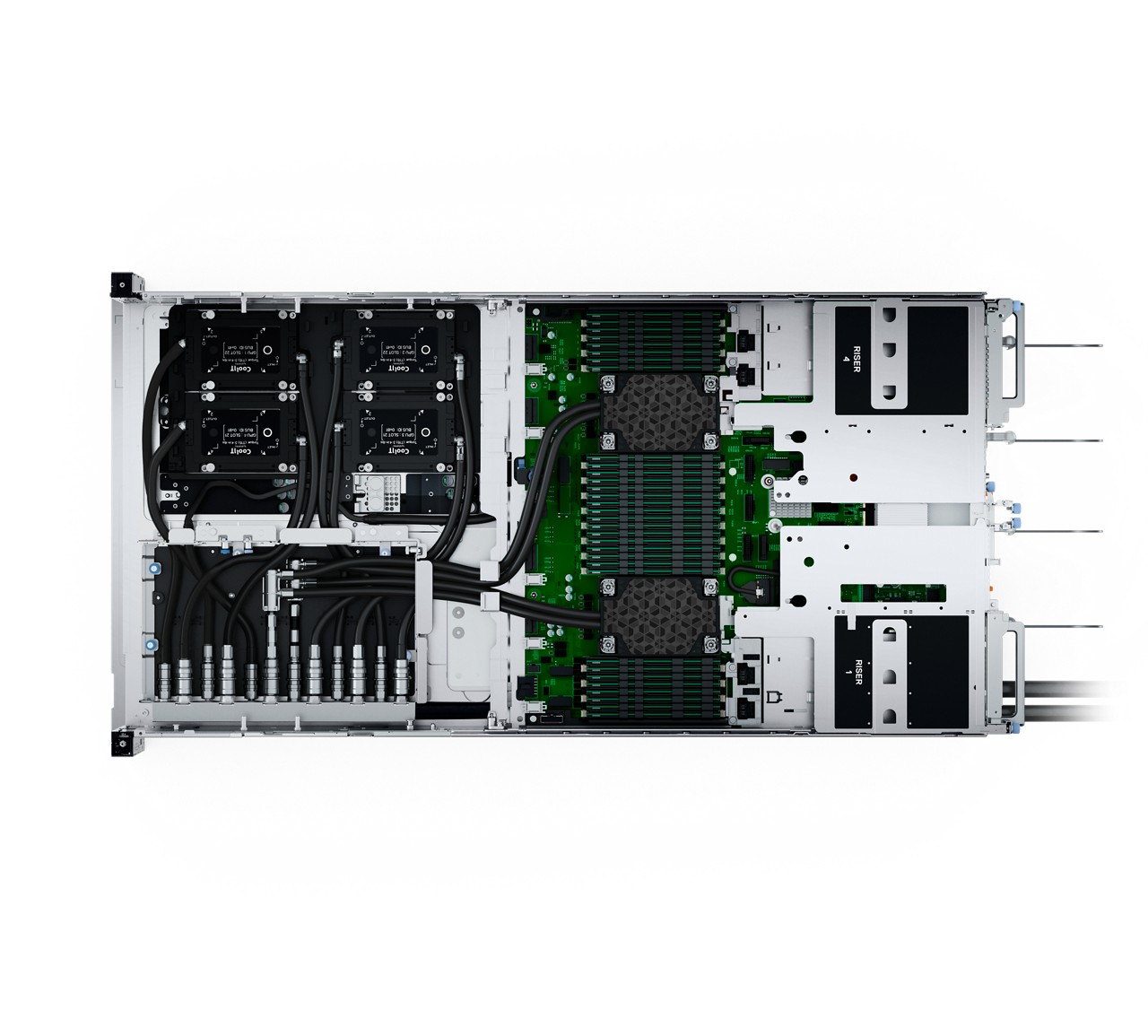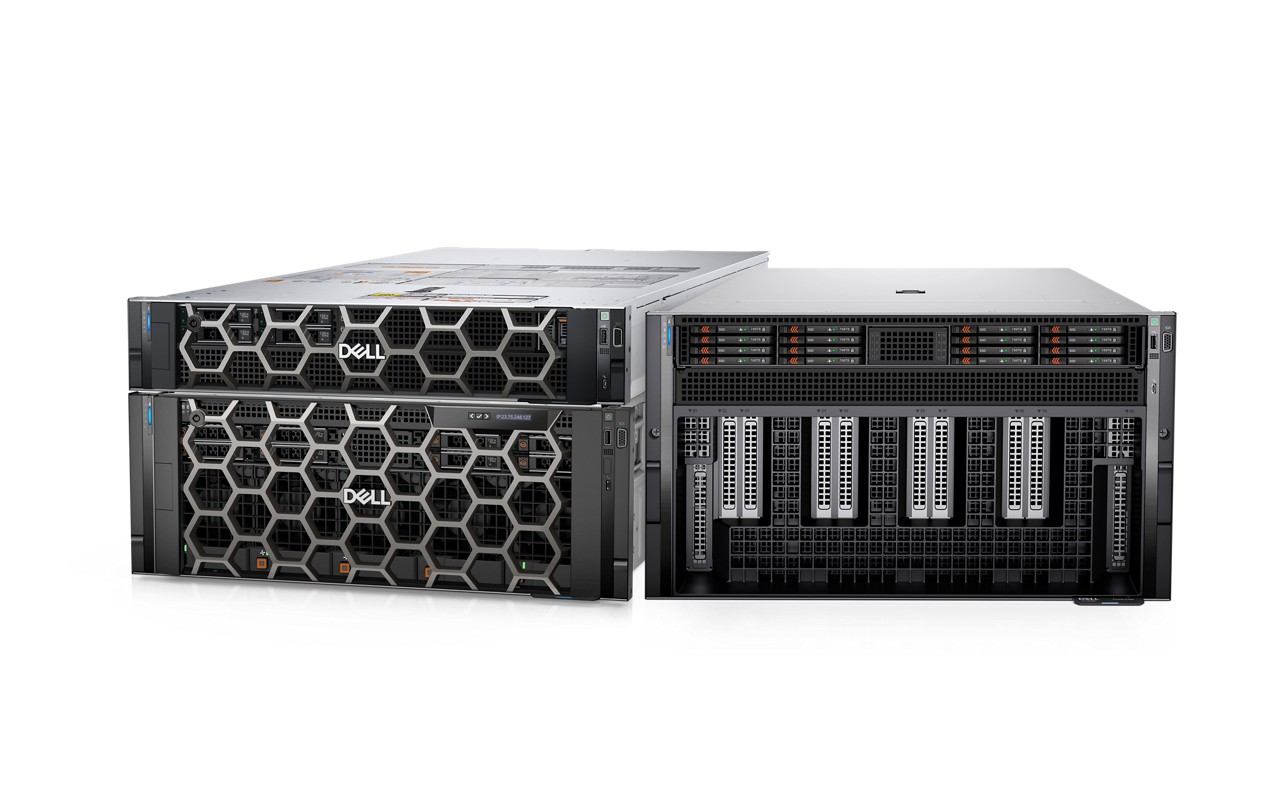As businesses continue to harness the power of artificial intelligence and high-performance computing (HPC), the demand for high-performance GPU-accelerated servers is rising. Dell Technologies is at the forefront of delivering innovative infrastructure solutions to meet this demand. With the recently released Dell PowerEdge XE9640, a purpose-built direct liquid-cooled (DLC) server for AI and HPC, Dell is taking AI acceleration and GPU density per rack to the next level.

GPU Diversity: Unleashing the Full Potential of AI
One of the standout features of the PowerEdge XE9640 is its GPU diversity. The server offers either a 4x NVIDIA NVLink interconnected H100 SXM5 GPU module or 4x Intel Xelink interconnected Intel Data Center GPU Max 1550 Open Compute Platform (OCP) Accelerator Module (OAM), making it a versatile solution for a wide range of AI workloads. NVIDIA NVLink and Intel Xelink technologies in the PowerEdge XE9640 allow seamless communication between the graphics processing units (GPUs), pooling their memory and cores to efficiently tackle memory-coherent workloads such as large language models (LLM).
This level of GPU diversity allows customers to tackle the growing demands of generative AI, industrial simulation modeling and groundbreaking scientific research. As an example, the PowerEdge XE9640 provides Intel Data Center GPU Max accelerator capabilities to the Texas Advanced Computing Center (TACC) Stampede3 supercomputer.
Density and Cooling: Optimizing Rack Space and Efficiency
The PowerEdge XE9640 is purpose-built with density and cooling in mind, allowing for efficient use of rack space and enhanced performance. With a 2RU profile, this server offers dense GPU capacity per rack, maximizing valuable data center real estate use. By leveraging DLC technology, the PowerEdge XE9640 provides a more efficient and cost-effective solution than traditional air-cooled systems.
Regarding GPU-accelerated workloads, power and cooling are crucial factors to consider. AI-augmented HPC is accelerating research into green technology initiatives, such as alternative energy sources, superconductor research and climate modeling. The PowerEdge XE9640 is well-equipped to handle these demanding workloads while meeting green data center requirements, providing a reliable and efficient solution for AI-driven innovation. The PowerEdge XE9640’s direct liquid cooling system ensures optimal performance and lower total cost of ownership under even the highest computational loads.
Evolving Power-per-rack Needs
GPU acceleration condenses computational power far beyond the exponential growth predicted by Moore’s Law. The potential of generative AI (GenAI) and heightened demand for GPU acceleration has created a change in thinking in data center design.
The compact PowerEdge XE9640 is purpose-built for maximum GPU density per rack compared to its 4RU or larger air-cooled equivalents. The 2RU server profile accommodates a growing trend for higher power per rack without sacrificing storage or PCI Express (PCIe) configuration options.
The PowerEdge XE9640 offers opportunities for customers to optimize their power-per-rack utilization. With nine servers per rack, a peak accelerated computing load could require approximately 41kW of power, utilizing three-phase power for balanced distribution. Scaling up, data centers can deploy racks with 12, 18 or even 21 PowerEdge XE9640 servers, achieving power levels of approximately 54kW, 81kW and 95kW, respectively. This flexibility allows data centers to maximize rack power utilization based on specific requirements.

Look Inside the PowerEdge XE9640 with StorageReview
In a recent video interview, Brian Beeler of Storage Review visited Dell’s Round Rock headquarters to provide customers with a comprehensive guide to internals of the PowerEdge XE9640. The resulting video offers an in-depth analysis of the server’s innovative design and ultra-dense GPU acceleration capabilities.
To further illustrate the advantages of the PowerEdge XE9640, Dell has developed an infographic comparing it with its air-cooled counterpart, the PowerEdge XE8640. This infographic highlights the key differences of the PowerEdge XE9640, emphasizing its liquid cooling efficiency and dense GPU capacity per rack.

Dell Generative AI Solution: Transforming AI Workloads
The PowerEdge XE9640, XE8640 and XE9680 are central to the growing portfolio of Dell GenAI solutions, aimed at transforming AI workloads and driving innovation. Dell’s GenAI solution combines innovative technology, innovation and the services expertise of Dell Technologies to deliver smarter and faster outcomes. By leveraging the power of GenAI, businesses can unlock new insights, accelerate transformation and boost employee productivity.
Explore Dell Generative AI and HPC Solutions
The Dell PowerEdge XE9640 is a game-changing AI server that offers GPU diversity, density and cooling capabilities. With its versatile configuration options and liquid cooling technology, the PowerEdge XE9640 is well-equipped to handle the demands of AI workloads. By leveraging Dell’s GenAI solution, businesses can unlock the full potential of their data and drive innovation in their respective industries.
Learn more about Dell’s GenAI and HPC solutions. Discover how Dell’s accelerator-optimized servers, including PowerEdge XE servers can empower your AI initiatives and ensure the sustainability of HPC infrastructure. Please join the September 27, 2023 Dell HPC Community online event to learn more about the PowerEdge XE9640, next-gen server architectures and the future of HPC data center power and cooling.


